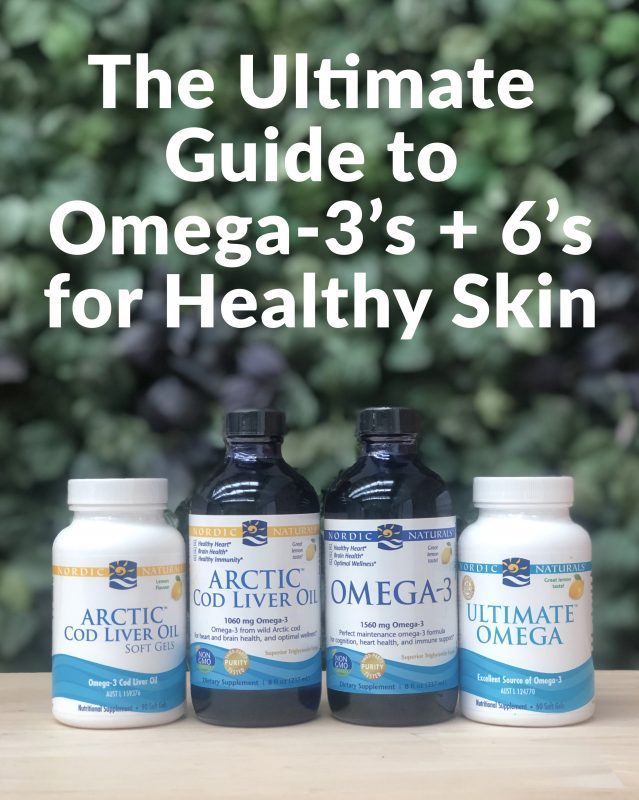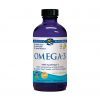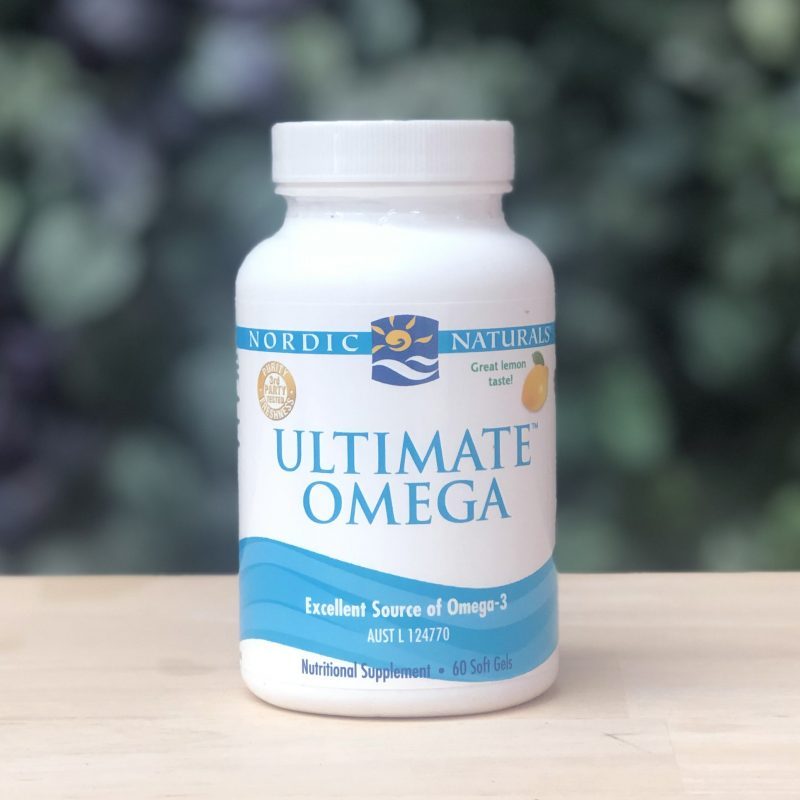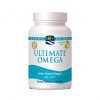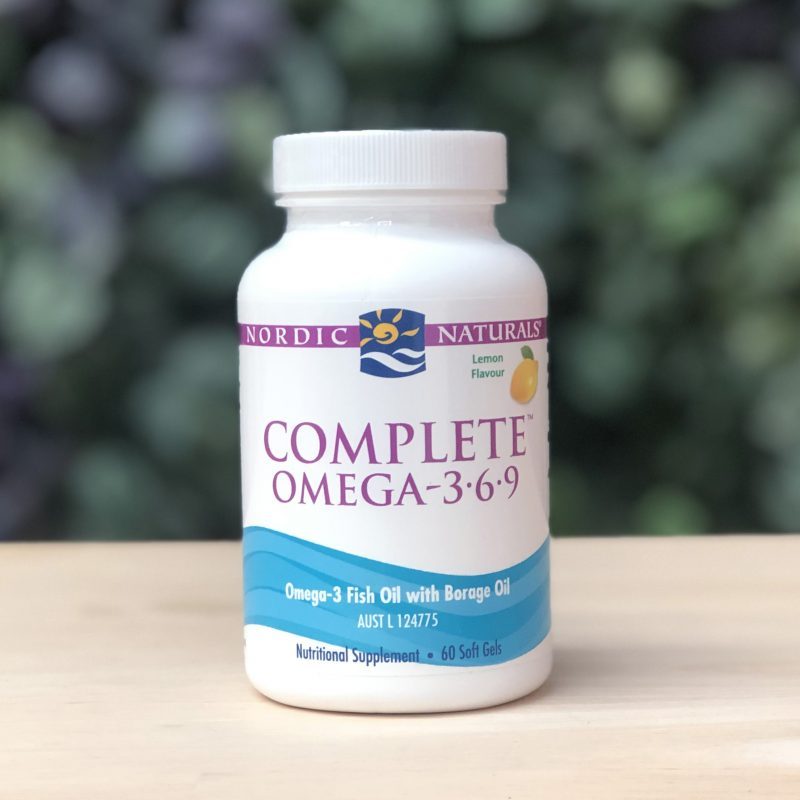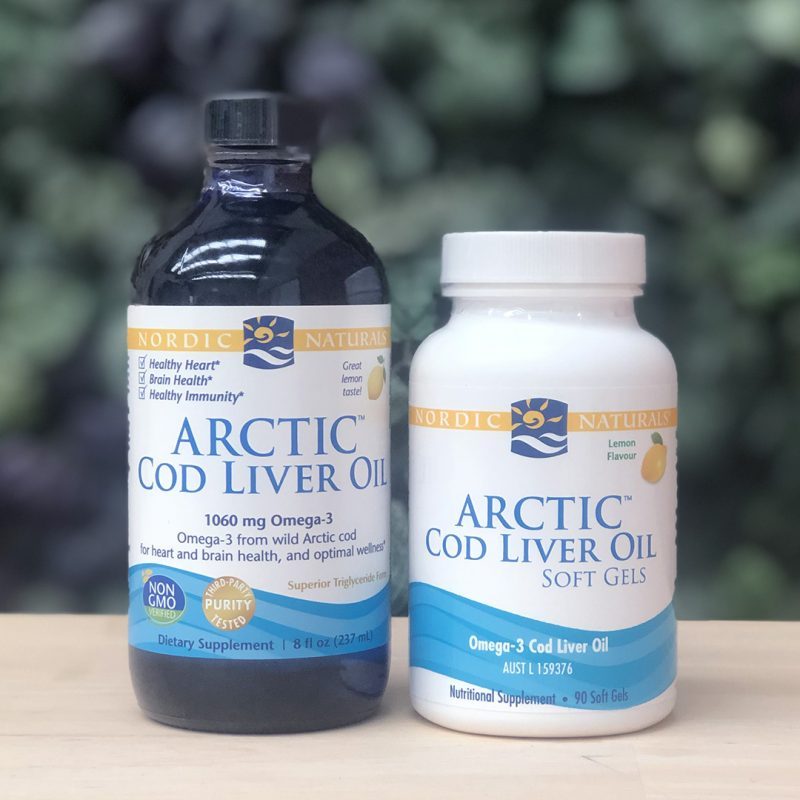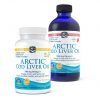What to Eat for Healthy Skin
The Ultimate Guide to Omega-3’s + 6’s for Healthy Skin (Fish Oil +)
We all know that eating fish regularly is good for us!
Fish a good source of protein and other important nutrients. It’s also one of our only high quality, whole food sources of omega 3’s.
A 2019 survey suggests that only 26% of Australians consume seafood more than once per week. This means that the majority of Australians aren’t getting enough essential omega 3 fatty acids in their diet.
If you’re not one of the 26%, then you’re likely to need some extra omega 3 support…
…particularly if you’re noticing redness and skin reactivity or breakouts (inflamed skin) as well as signs of ‘internal’ inflammation like swollen joints, stiffness in the body or tender spots.
In this Ultimate Guide, I want to give you the tools to choose between omega supplements
…with the knowledge that one might be more helpful initially and another might be more for ongoing support.
But first, lets take a look at inflammation and our skin, so we can understand why anti-inflammatory omega’s might be helpful for skin…
Inflammation and the Skin

Inflammation is the normal, natural response of our immune system to damage, infection or the presence of problematic substances in the body.
Problematic substances like:
- Inflammatory foods
- Pathogenic microbes
- Environmental toxins and pollutants
- Partially digested proteins from food or microbes
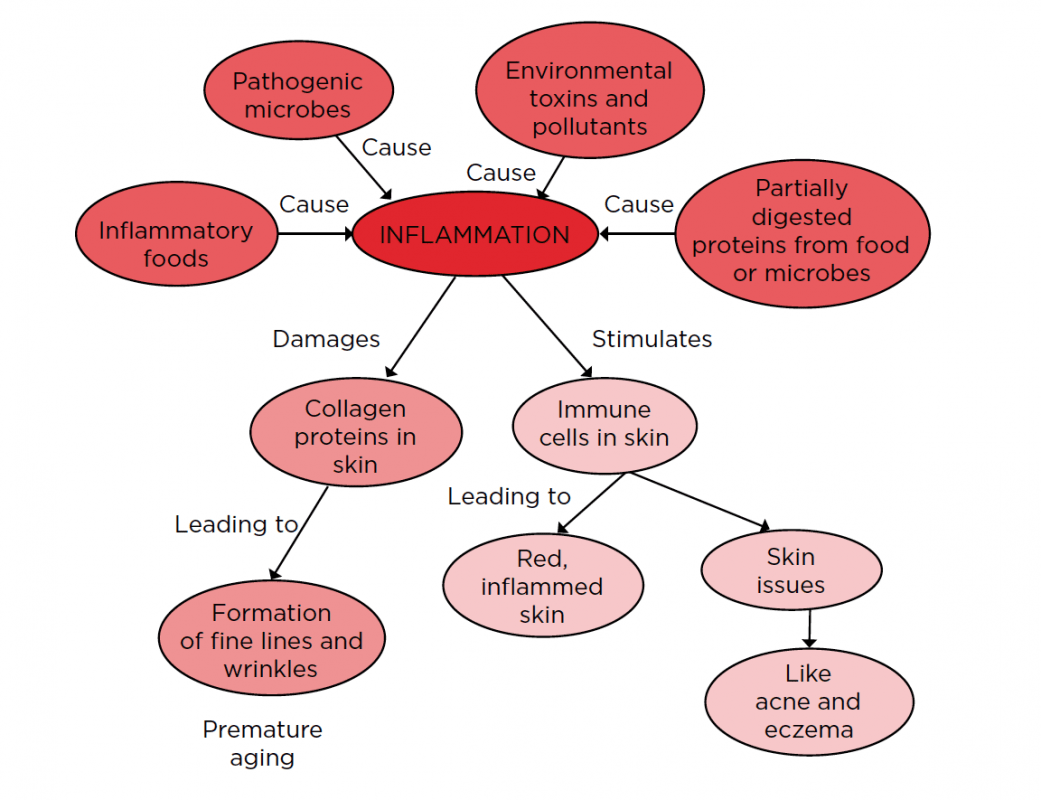
These problematic substances can come into our bodies through our skin, our gut and the air we breathe.
When we’re exposed to these over a long time it can lead to chronic, whole body inflammation and increase our risk of disease.
Chronic inflammation in the body can also show up on the skin.
This is because we have an abundance of immune cells in our skin that help to protect us from the outside world.
These immune cells can be hyper-responsive to inflammation from the inside – leading to red, inflamed, easily irritated skin.
And also skin issues like eczema, acne and rosacea.
Inflammation can also damage collagen in our skin.
Collagen proteins in skin help keep our skin soft and supple, but inflammation can damage collagen and speed up the formation of lines and wrinkles.
Let’s take a look at the essential fatty acids that can affect the level of inflammation we have in our bodies and on our skin…
The Run Down on Essential Fatty Acids - Omega 3's and 6's
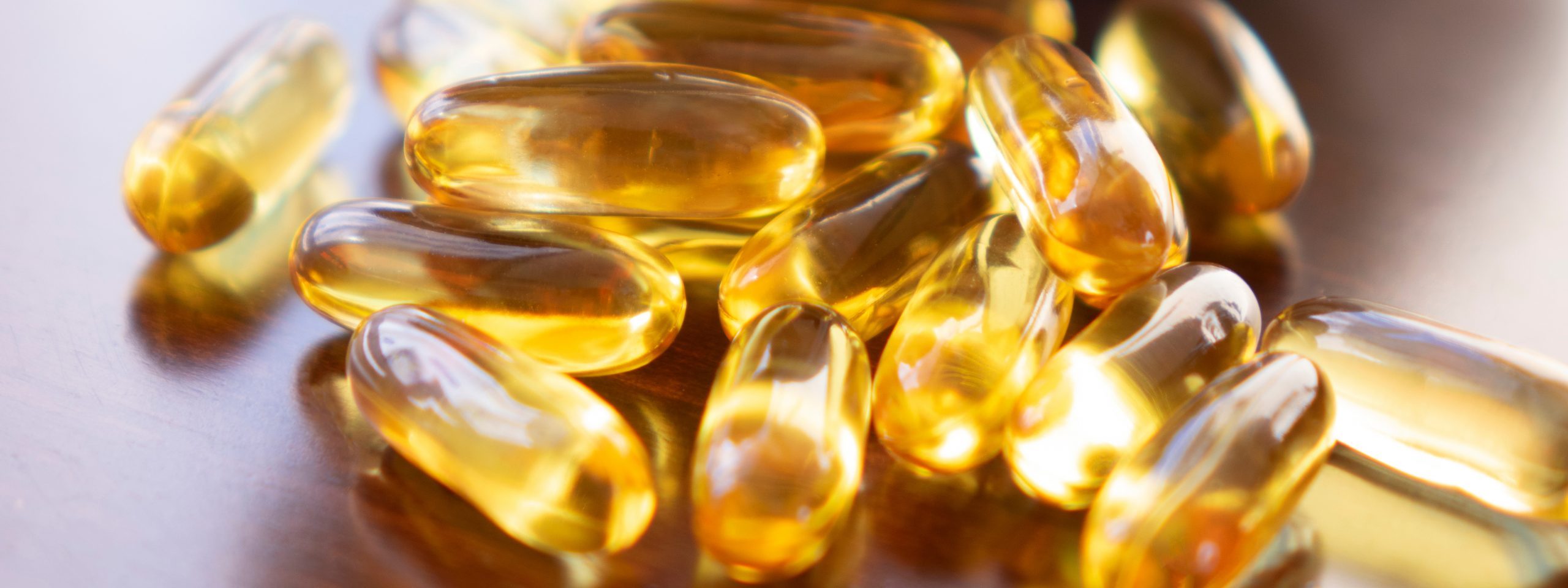
All things going to plan, our body has the ability to produce many of the fatty acids it needs… from saturated fats and unsaturated fatty acids to helpful cholesterol.
But there are two types of fatty acids that we can’t produce ourselves… these are our essential fatty acids (omega 3’s & 6’s).
We can only get these in our food. So if we’re not we’re eating foods rich in these essential fatty acids, we need to supplement with omegas for our general health and skin health.
Omega 3’s
Key omega-3 fatty acids are:
- Eicosapentaenoic acid (EPA)
- Docosahexaenoic acid (DHA), plus
- Plant sourced Alpha linoleic acid (ALA)
Plant based ALA can be converted to EPA in the body.
But the bioavailability is quite low… meaning you’ll need higher levels of plant based ALA to get the same amount of EPA you would from a fish source.
Omega 6’s
Key omega-6 fatty acids are:
- Arachidonic acid (ARA)
- Gamma-linolenic acid (GLA)
- Linoleic acid (LA)
- Conjugated linoleic acid (CLA)
It’s the BALANCE of Omega’s that’s important
In a typical western diet, omega 6’s are very high.
We find higher levels of arachidonic acid (AA) in foods like:
- Canola oil and other vegetable oils,
- Processed foods,
- Grains like wheat,
- Grain-fed meat,
- Chicken and
- Margarine
Arachidonic acid is pro-inflammatory… especially when it’s not balanced by other anti-inflammatory omega 3’s and 6’s.
A healthy ratio for omega 6’s vs. 3’s in our diet is thought to be 4:1 or less
(so 4 times more omega 6’s than 3’s)
But a typical Western diet is more likely to have omega 6 to omega 3 ratios of 10:1 or even 50:1 for some people.
(so we’re typically eating 10 to 50 times more inflammatory omega 6’s than anti-inflammatory omega 3’s)
If the foods we eat are consistently much richer in omega 6’s than omega 3’s… we’re more likely to notice inflammation in our body.
This might be sore joints, red skin, rashes and skin issues like breakouts, rosacea or eczema …or autoimmune conditions like arthritis or inflammatory bowel disease (IBS)
When we take omega 6 rich, inflammatory foods out of our diet and eat anti-inflammatory whole foods like:
- Fruit and veggies,
- Grass fed meat,
- Wild caught fish,
- Free range eggs and
- Natural fats
…it helps to balance our ratios of omega 6’s and 3’s… which goes a long way towards reducing inflammation in the body (and the skin)
When we have ‘visible signs’ of inflammation, getting closer to that healthier 4:1 ratio of omega 6’s to 3’s is hard!
This is when you might consider a fish oil supplement… to help support that re-balancing of omega’s in the body.
It’s also important to note that not all omega 6’s are “bad” for skin health
Gamma-linolenic acid (GLA) is a special type of omega 6.
It’s found in borage, primrose and hemp seed oils.
Because GLA isn’t widely found in the Western diet, it doesn’t typically contribute to the ‘overload’ of omega 6’s
GLA is also special because it has been shown to be anti-inflammatory.
…and supplementation with GLA from borage oil has been shown to be helpful for skin health.
Linoleic acid (LA) has also been shown to be supportive for skin barrier function when used topically
Benefits of Omega 3 (DHA + EPA) and Omega 6 (GLA) for skin health

Omega 3’s (DHA + EPA) from fish oil have been shown to:
- Keep skin hydrated to prevent dryness
- Help with the appearance of rough skin
- Reduce inflammation in the skin
- Improve blood flow
- Promote new healthy skin cell formation
- Protect skin from sun damage
GLA from borage oil has been shown to:
- Reduce symptoms of dry & itchy skin
- Help retain moisture and keep the skin hydrated
- Reduce inflammation in the skin
- Nourish both skin and hair
How to choose the type of Omegas you want to supplement

Now that we know the benefits of both omega 3’s & 6’s…
…when would we choose a stand alone omega 3 supplement over a supplement with omega 3, 6 and 9’s all in one?
…and when might we choose cod liver oil over fish oil?
… and how do we want to take our omega supplements? (liquid or capsules)
This is all really very dependent on your reasons for wanting to take fish oil…
Omega 3’s are good for noticeable signs of Inflammation (skin, joints, mood)
As we spoke about above, the typical Western diet is higher in omega 6’s than it is in anti-inflammatory omega 3’s.
One of the reasons, is that few families consume one or more servings of oily fish a week (and I’m not talking about oily deep fried fish here either)
If you don’t like fish or you don’t have it often, then you’re likely to need some omega 3 support…
…particularly if you’re noticing redness and skin reactivity or breakouts (inflamed skin) as well as signs of ‘internal’ inflammation like swollen joints, stiffness in the body or tender spots.
In this case, taking a stand alone omega 3 supplement to start with may be helpful to reduce initial signs of inflammation.
From there, you might look to a complete omega or cod liver oil supplement for ongoing support.
Complete Omega 3, 6, 9 are good for supporting Sensitive or Reactive Skin
Omega 3’s, 6’s and 9’s all work together synergistically to give support to the surface layer and deeper layers of the skin. So having a balance of omega’s in the body is super important.
The omega-6 GLA supports the skin by helping to improve and repair the skin’s barrier function.
If our skin’s barrier function is damaged, we might notice our skin is dry, flaky, scaly, itchy and reactive.
We might also notice fine lines are more visible.
GLA has been shown to be helpful for dry, red and irritated skin, including eczema prone skin.
So a combination of omega 3,6 & 9 is helpful for when skin is more reactive and is in need of supportive nutrients to help repair the skin’s barrier.
Looking at your reasons for taking fish oil will help you work out which way to go – whether it’s a standalone omega 3 or a complete omega 3,6,9 supplement.
If you’re still not sure, feel free to reach out and have a chat with us… we’re more than happy to help!
Cod Liver Oil vs Fish Oil – when would you choose one over the other?
Before choosing whether cod liver or fish oil is best suited to you… it’s important to understand a little about cod liver oil itself first…
Fish oil is generally extracted from the flesh of the whole fish.
And, cod liver oil is extracted from… you guessed it, the liver of a cod fish
(well some are – see our section below on quality for more info on this…)
This creates 2 key differences between Cod Liver Oil and Fish Oil…
Difference #1 = A higher ratio of DHA to EPA in cod liver oil compared to fish oil
Both fish oil and cod liver oil are excellent sources of omega 3s.
But the ratios of the types of omega 3 in each are slightly different.
Fish oil generally has more EPA than DHA in it.
Compared to cod liver oil, which generally has more DHA than EPA in it.
DHA can be more helpful for mood and for supporting learning and brain development.
EPA can be more helpful for heart health, cognition and the immune system
Looking at your reasons for taking fish oil will help you work out which way to go – whether it’s cod liver oil or fish oil
Difference #2 = Naturally occurring Vitamins A & D
Cod Liver also contains small amounts of naturally occurring vitamins A & D.
This is because we tend to store these vitamins in our liver.
The combination of Vitamins A + D with Omega 3’s is helpful for:
- Skin barrier function – to keep allergens and irritants out and moisture in our skin
- Supporting the foundation of collagen in the skin
- Reducing inflammation in skin
- Supporting acne or breakout prone skin
- It may also be beneficial for keratosis pilaris (the ‘chicken skin’ on the back of our arms)
Looking at your reasons for taking fish oil will help you work out which way to go…
If you’re looking for the benefits of DHA with Vitamins A and D – then I would suggest taking a look at cod liver oil.
But if you’re looking more for the benefits of EPA – then maybe a fish oil might suit you better.
If you have questions about your Vitamin A intake, it’s extremely important to talk to your health care practitioner before adjusting your supplement regime. Especially, if you’re pregnant or wanting to conceive.
“Vitamin A toxicity is greatly misunderstood. While some forms of synthetic vitamin A may be toxic at moderate doses, natural, fat-soluble vitamin A, found in foods like cod liver oil, is safe at much higher amounts” ~ Dr Brad
Liquid vs capsule
This choice is really a personal preference.
Liquid oils make it easier to take a higher single dose a day.
Whereas with capsules, you will need to take a lot of capsules to equal the dose of the liquid
(if it’s non-concentrated formula)
Some people don’t like the feeling of drinking the oil and others don’t like to consume unnecessary capsule casings.
Weigh up the options and pick what fits with your lifestyle and values.
Choosing a Brand - The Quality of the fish oil is important

Unfortunately not all supplemental fish oils are created equal!
I would be questioning a fish oil’s quality if I found 400 capsules of fish oil for $20…
When choosing the right fish oil product for you, there are 4 things to look out for:
1. How fresh is the fish oil?
Like many other oils, if fish oil:
- Isn’t stored properly
- Hasn’t been processed well, or
- Hasn’t been processed quickly from fresh fish
Then you’re more likely to get oxidised (rancid) oils, that can do more harm than good.
So how do you know how fresh your fish oil is?
If you cut open any fish oil capsule, it shouldn’t really smell or taste overly ‘fishy’…
Also when you take fish oil, if you’re burping up a ‘fishy’ taste, it can be a sign of a poorer quality fish oil.
2. Is the brand transparent about quality testing?
Pollution of our waterways and oceans is leading to more and more fish being contaminated with heavy metals like mercury and lead, as well as environmental and industrial pollutants like dioxins and PCBs.
So it’s important for a fish oil manufacturer to routinely test for these contaminants in their fish oil products to make sure they’re not present at high levels.
Have a look on the brands website… are they transparent about quality testing?
Can you see what testing was done on your product?
3. Where and how are the fish sourced?
Personally, I believe we should all know exactly where our food and supplements are sourced from
…and how they’re sourced. I personally prefer to choose products that have less environmental impact.
This is especially important for fresh fish and fish oil.
Overfishing and the accidental capturing of endangered species while fishing can weigh heavily on the sustainability of a supplement.
Brands can certify with organisations like Friends of the Sea… who measure a companies fishing practices against the Friends of the Sea standards.
Criteria to be Friends of the Sea certified include:
- Not over catching fish species that are depleted or over exploited
- Selective fishing practices that prevent the capture of other endangered species
- Fishing methods that do not impact the sea bed and that help protect habitats and ecosystems
- Social accountability and fair work conditions
You can look up certified brands on the Friends of the Sea website.
Listing includes what types of fish that company is catching and where they’re fishing. This helps you to make an informed decision about what you’re buying.
4. Cod Liver Oil Quality
As with fish oil, not all cod liver oil is created equally.
International labeling laws for cod liver oil enable any product that has higher DHA to EPA ratios to be called ‘cod liver oil’.
Even if the oil is actually from the flesh of fish similar to cod rather than the liver.
This also means that synthetic forms of Vitamins A and D need to be added because these vitamins are not naturally occurring in fish flesh.
This is where there can be issues for women or are pregnant or wanting to conceive. Because moderate doses of synthetic vitamin A can result in birth defects.
Which is why it’s extremely important to talk to your health care practitioner before adjusting your supplement regime. In particular if you’re pregnant or wanting to conceive.
Be sure to have a look at the labels of cod liver before purchasing.
If there’s an exact figure for the amount of Vitamin A in the supplement… then it’s more likely to not to be from cod liver and the Vitamin A is added. Where there is a range of Vitamin A on a product label, the Vitamin A is less likely to be added from a synthetic source.
Which makes sense, because this will change depending on the fish’s diet, season or where they’re caught etc.
How we chose the fish oil in the Ecology Online Store
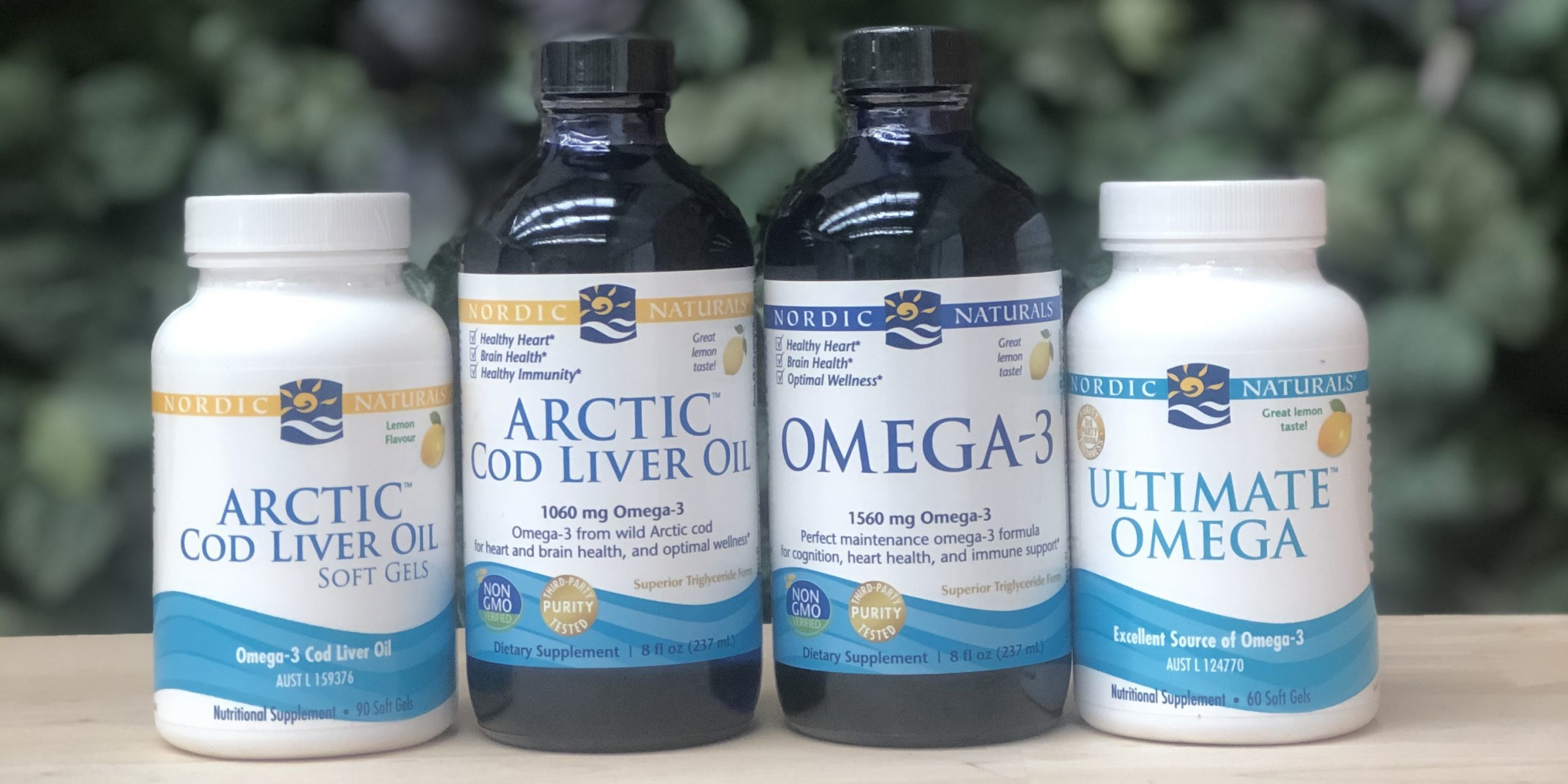
At Ecology Skincare all of the above is important to us – quality, freshness, regular testing as well as sustainable fishing practices
This is why when choosing a brand of fish oil to stock for you all… we couldn’t go past Nordic Naturals.
Nordic Naturals are certified by Friends of the Sea.
They fish sustainably for non-endangered fish in a way that minimises pollution, waste and damage to other species and the sea bed.
Nordic Naturals have a high standard of independent testing… and they have a good quality product!
We felt they represented what a lot of our customers are looking for in a high quality fish oil brand and product.
If you’re interested in learning a bit more about their process, I would highly recommend watching the video on their website
Why we chose these Nordic Naturals Products…
Omega-3 Liquid
A generous non-concentrated serving of Omega-3’s in a great tasting liquid.
Made from 100% wild caught sardines and anchovies.
1 teaspoon (5mL) gives: 1560mg of total Omega 3’s
- 750mg EPA
- 550mg DHA
This is the perfect maintenance formula. An anti-inflammatory liquid to help support general well-being, mood, immune system and healthy skin
Lemon Flavoured, 237mL liquid
Ultimate Omega
Concentrated Omega-3’s in easy-to-take soft gel capsules
Made from 100% wild caught sardines and anchovies.
This is double strength Omega 3’s, so there are fewer soft gels to take in one go
2 soft gel capsules gives: 1280mg total Omega 3’s
- 650mg EPA
- 450mg DHA
This double strength formula gives increased omega 3 support in fewer soft gels… perfect for those wanting a high dose without taking a liquid.
Anti-inflammatory soft gels to help support general well-being, mood, immune system and healthy skin
Lemon Flavoured, 60 soft gels
Complete Omega (3,6,9)
A non-concentrated blend of omega 3s from cold water fish with GLA (omega 6) and oleic acid (omega 9) from borage oil in easy-to-take soft gel capsules.
Made from 100% wild caught sardines and anchovies plus borage oil.
2 soft gel capsules gives: 516mg total Omega’s
- 270mg EPA
- 180mg DHA
- 66mg GLA
This combination of omega 3,6 & 9 is perfect for when skin is more sensitive or reactive and is in need of supportive nutrients to help repair the skin’s barrier.
Arctic Cod Liver Oil
In addition to Omega-3’s, cod liver oil also naturally contains Vitamins A and D.
Made from 100% wild-caught arctic cod.
Available in soft gel capsules and liquid:
2 capsules gives: 450mg of total Omega 3’s
- 150mg EPA
- 210mg DHA
- 85 – 590IU vitamin A
- 0.33 – 4 IU vitamin D
1 tsp (5mL) gives: 1060mg of total Omega 3’s
- 340mg EPA
- 510mg DHA
- 230- 920 IU vitamin A
- 0-20 IU vitamin D
The combination of omega 3’s with Vitamins A and D is helpful for skin barrier health, laying down collagen and reducing inflammation.
Reducing inflammation through eating oily fish multiple times a week or supplementing with omega 3’s is helpful for healthy looking skin.
…and quality is important when we’re looking at what brands and products of fish oil and omega supplements to choose.
When we have chronic, whole body inflammation it can show up on the skin in the form of….
- Red, inflamed, easily irritated skin
- Skin issues like eczema, acne and rosacea.
- Premature ageing, with early visible fine lines and wrinkles
Reducing inflamed skin and rebuilding our skin’s barrier function from inside out and outside in can take time.
We need to wait for the new cells to be formed at the lower levels of the skin to make their way to the surface where we can see them.
So remember to be patient and look at omega support as your long term foundation for overall wellbeing and skin health.

